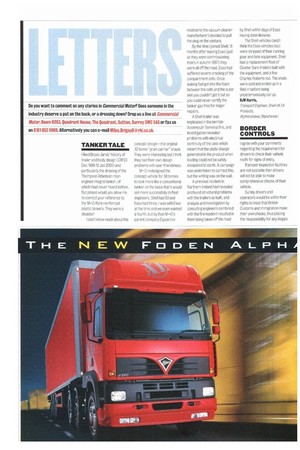TANKER TALE
Page 24

If you've noticed an error in this article please click here to report it so we can fix it.
I liked Bryan Jarvis' history of trailer and body design (CM23 Dec 1999-12 Jan 2000) and particularly the drawing of the Thompson Atlantean nearengined integral tanker, of which I had never heard before. But please would you allow me to correct your reference to the M+G fibre-reinforced plastic tankers. They were a disaster', I don't know much about the concept design—the original 32-tonne "grain carrier" shape. They were interesting but I think they had their own design problems with user-friendliness.
M+G redesigned the concept vehicle for 38 tonnes to look more like a conventional tanker on the basis that it would sell more successfully to fleet engineers. Shell had 60 and Esso had three. I was with Esso at the time and we even wanted a fourth, but by then M +G's parent company Dyson (no relation to the vacuum cleaner manufacturer) decided to pull the plug on the venture.
By the time I Joined Shell, 18 months after leaving Esso (just as they were commissioning theirs in autumn 1987) they were all off the road. Esso had suffered severe cracking of the compartment cells. Once leaking fuel got into the foam between the cells and the outer skin you couldn't get it out so you could never certify the tanker gas free for major repairs.
A Shell trailer was implicated in the terrible Avonmouth Terminal fire, and investigation revealed problems with electrical continuity of the cells which meant that the static charge generated in the product when loading could not be safely dissipated to earth. A campaign was undertaken to correct this, but the writing was on the wall.
A previous incident in Northern Ireland had revealed profound structural problems With the trailers as built, and analysis and investigation by consulting engineers combined with the fire incident resulted in them being taken off the road by Shell within days of Esso having done likewise.
The Shell vehicles (and] think the Esso vehicles too) were stripped of their running gear and tank equipment. Shell had a replacement fleet of Gloster Saro trailers built with the equipment, and a few Charles Roberts too. The shells were sold and ended up in a field in before being unceremoniously cut up. RJW HarriS,
Transport Engineer, Shell UK Oif Products, Wythenshawe, Manchester.












































































































